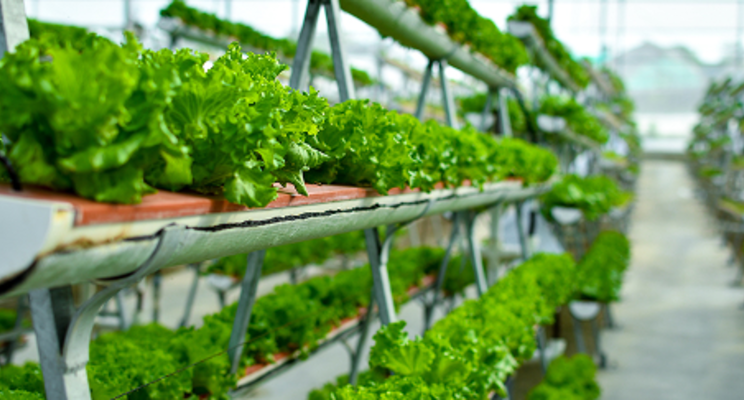
Vertical farming has a $50 billion market opportunity and a chance to mitigate sustainability issues within traditional fresh fruit and vegetable agriculture, according to new research by Barclays Capital.
Vertical farming allows farmers to produce “hundreds of acres of crops to grow on a single acre of land” and to do so irrespective of weather conditions and with little waste. However, although the vertical model uses 70% less water than traditional growing methods and foregos the use of pesticides, fertilizers or herbicides there are challenges associated with scaling up this model.
“hundreds of acres of crops to grow on a single acre of land”
The Barclays study noteed that the most pressing critique for the widespread use of this farming method is the “significant” energy use that is required. These encapsulated farming systems rely on energy that comes off the national grid to artificially light, heat, cool and automate the growing cycle of plants. Due to the nature of the energy being pulled from the grid, which generally comes from carbon-based sources, there are concerns about calling this system sustainable.
Barclays said that the farming industry as a whole needs to invest in renewable energy solutions to power these controlled environments, but the British investment bank acknowledged that such an undertaking will be “difficult and costly.” It also pointed out that by 2030, LED lights are expected to be 70% more energy efficient and will contribute to the increased sustainability of these systems.
Despite concerns about energy consumption, using this technology to grow fresh produce can have a far-reaching impact. The UN expects the world population to rise by two billion to 9.7 billion people by 2050. Such growth will strain current food systems which are inefficient from cultivation to distribution. Data from the UN’s Food and Agriculture Organization show that nearly one-fourth of global greenhouse gasses can be linked back to agriculture. Barclays’ insights emphasize that half of all crops produced globally perish before they arrive at grocery stores, which are often 1,500 miles away from the production source.
Vertical farms typically utilize hydroponic, aeroponic or aquaponic systems, which are closed-loop solutions that reduce water consumption by 70%, 95% and 100% respectively. Furthermore, these condensed farms are also a solution to produce fresh food nearby the consumer. As these farms operate on small footprints and in controlled environments, produce can be grown locally for consumers, food retailers, restaurants and foodservice distributors. This proximity also contributes to a fresher, more flavorful end product, according to Barclays.
Yet, Barclays noted that it will take substantial investment and time to build a consumer base and create a profitable system. Currently, the majority of vertical farming enterprises focus on cultivating leafy greens. Some are producing soft fruits and berries. To create a viable system, there needs to be an investment in other types of produce that can meet a wider variety of humanity’s plant-based needs.
Source and Photo Courtesy of Ingredients Network

